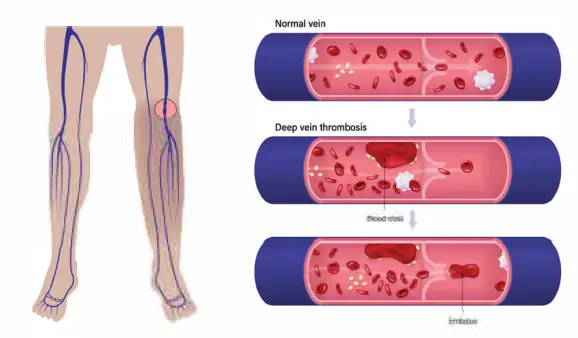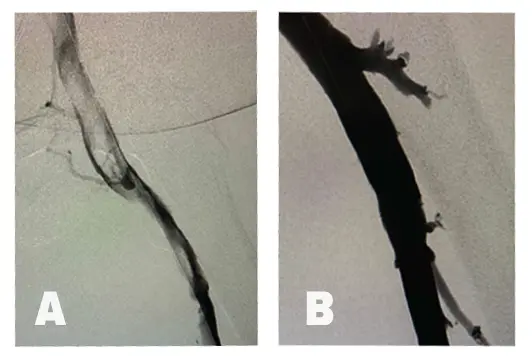What is a Deep Vein Thrombosis?
Are you experiencing leg swelling, pain, warmth, redness, and/or tenderness to the touch? This may be secondary to new or old blood clots.
A deep vein thrombosis is when a blood clot forms in one of your veins, which can cause swelling, pain, redness, discoloration, ulcers, rash, numbness/tingling, and even loss of pulse in that leg or arm. If the blood clot is severe, it may cause long term issues of chronic pain, swelling, extremity heaviness, numbness, tingling, or inability to tolerate exercise. These symptoms are collectively called post thrombotic syndrome. A deep vein thrombosis is identified on an ultrasound or CT scan.
If you are suffering from a deep vein thrombosis, you may be referred to see a specialist who performs a procedure to remove the clot or thrombectomy. The goal of removing the clot is to prevent long term issues such as post thrombotic syndrome.
The procedure is called thrombectomy and the equipment used is FDA approved for treatment of deep vein thrombosis.
Thrombectomy Procedure:
- A catheter, which is a long, hollow tube, is inserted into a deep vein. The doctor uses contrast dye and x-ray to locate the clot along the vein(s).
- Under x-ray guidance, an instrument is inserted through the catheter to remove the clot from the vein(s).
- If the vein is narrowed, a balloon may be used to try to reopen the vein. Sometimes a stent may need to be placed to keep the vein from narrowing again.
- Once most or all of the clot is removed, the catheter is removed.
Benefits and Outcomes:
- Minimally invasive procedure.
- Minimal complications, with the biggest risk being bleeding.
- Restores blood flow to the vein(s).
- With the clot removed, symptoms resolve almost immediately or within a short amount of time afterwards.
- When large clots are removed, it can prevent the clot from traveling to the lungs, or pulmonary embolism.




